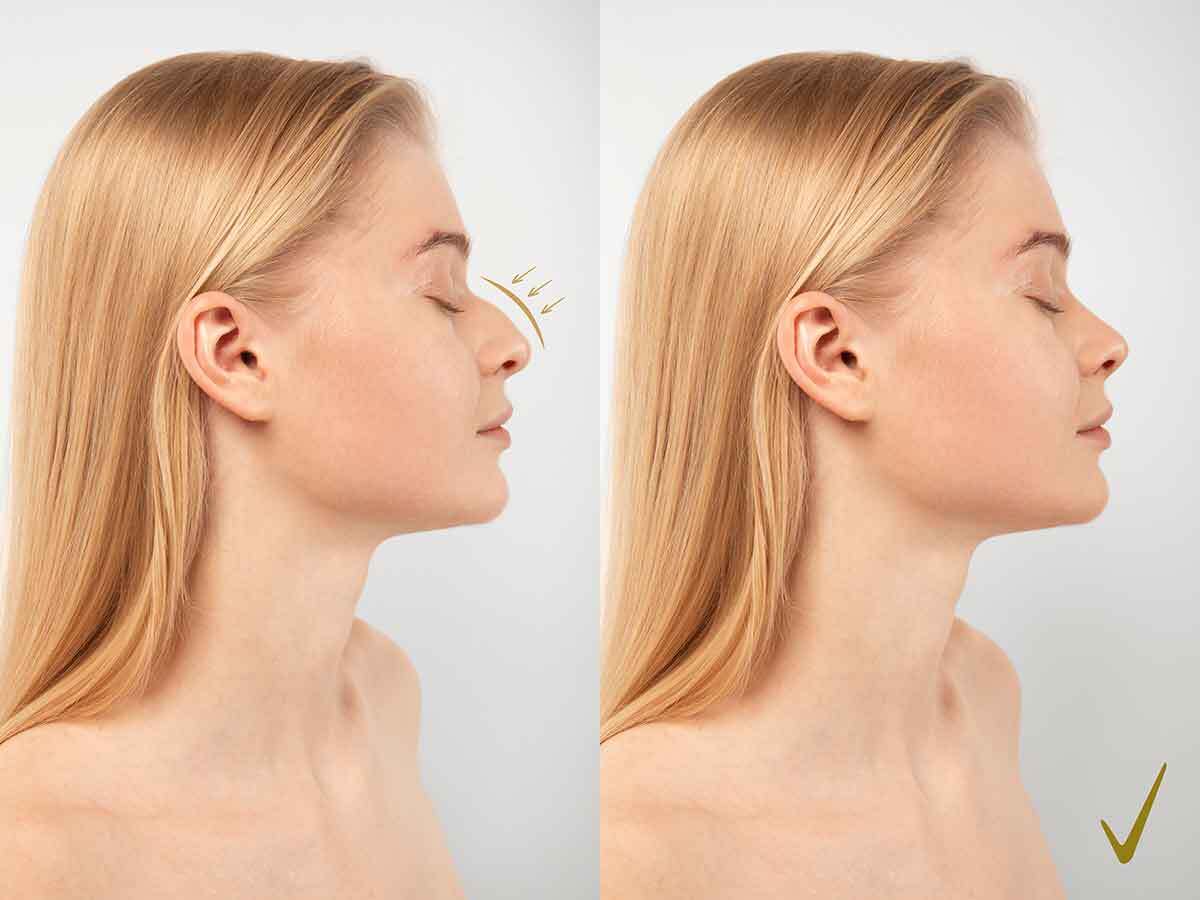For those who are looking to have a rhinoplasty, one of the biggest concerns they have is what can be shaped on the nose. While some come in with a very clear idea of what they want and how they want everything done, others don’t, and it’s helpful to know exactly what can be worked on and how. Here is a breakdown of the different sections of the nose that can be worked on during a rhinoplasty.
Read more: Rhinoplasty FAQs: All You Wanted to Know About Nose Jobs
Tip
The tip of the nose is one of the most common change requests. Common complaints include boxy/bulbous tips or tips that are too “pointy” or small. The tip also may be overly upturned, or on the other end of the spectrum, it may point downwards too much. Any of these complaints can be worked on during a rhinoplasty. Another common complaint is an asymmetrical tip which often occurs due to injury but can also be present from birth. Finally, the tip of the nose may be too overprojected (too far from the face) or underprojected (too close to the face).
Bridge
The bridge of the nose can be reshaped during a rhinoplasty as well. With the bridge, a hump or bump can be shaved down for a straighter look. A straight nose can be scooped in a bit to create some concavity to the nose. And sometimes a nose that curves inward too much or a low nasal bridge can be built up with a bone graft to make it straighter and project out from the face more.
Nostrils
Also known as alarplasty, reshaping or resizing the nostrils can be done during a rhinoplasty as well. Aesthetically speaking, the nostrils look best when they are about the same size as the space between your eyes. So if someone has larger nostrils than this, they may wish to have their size reduced. Another common request is to have flared nostrils reshaped. Sometimes, nostrils can have the appearance of being constantly flared out, even at rest. Alarplasty can help.
Septum
The septum is a strip of cartilage and bone located inside your nose. It’s what separates your nose opening into two nostrils. This is less about aesthetics and more about breathing easily, but the septum can also be worked on during a rhinoplasty. A deviated septum can cause issues breathing. The septum can be repositioned or reshaped to allow more space and to fix any crookedness.
It’s important to choose a plastic surgeon who listens to your wants and also advises you on proportions and other considerations. FacebyFisher has over 20 years of experience and would love to help you achieve the nose of your dreams. Contact our office at the number above to schedule a consultation today!
Read more: Botched Rhinoplasty? A Revision Rhinoplasty Can Help




